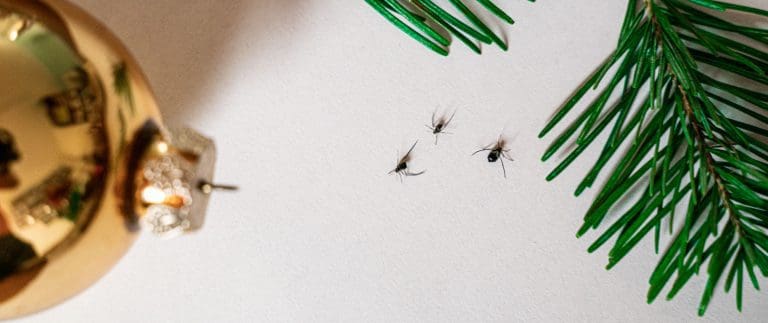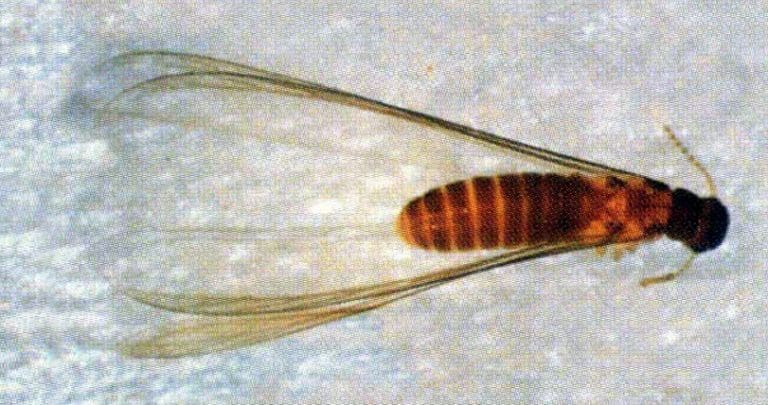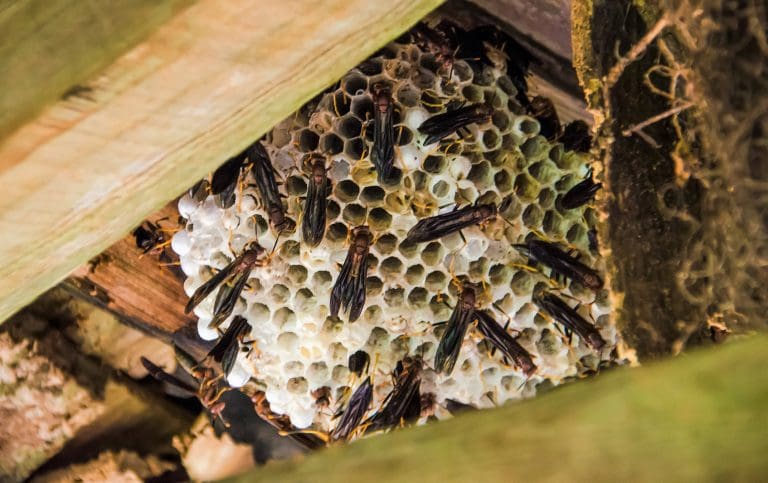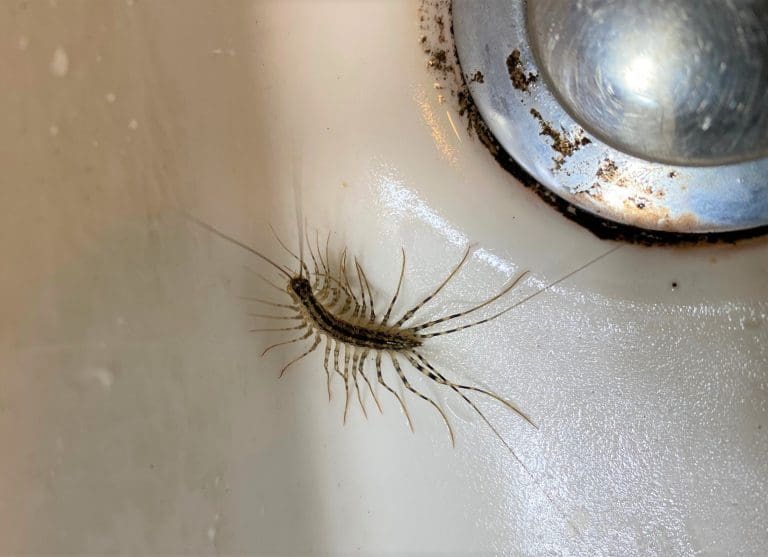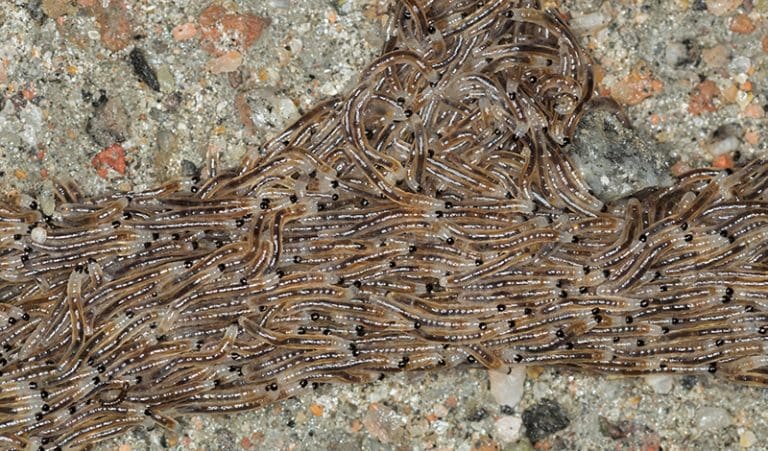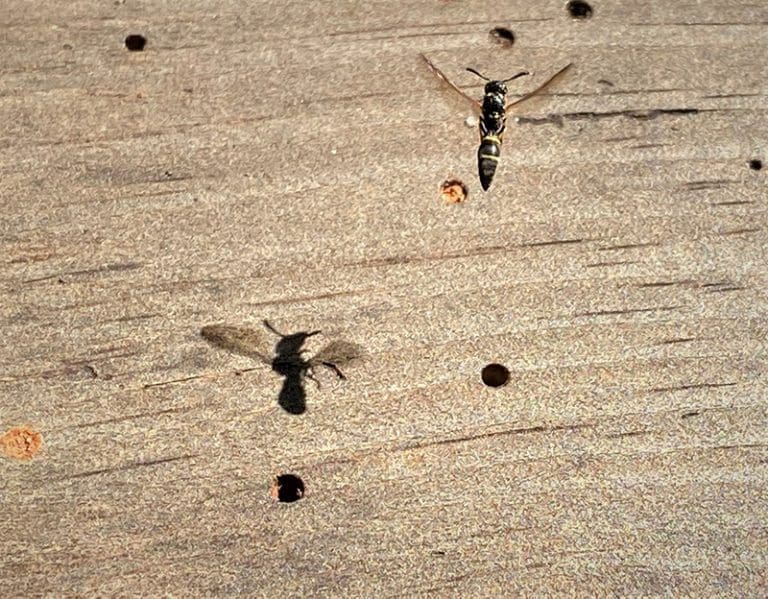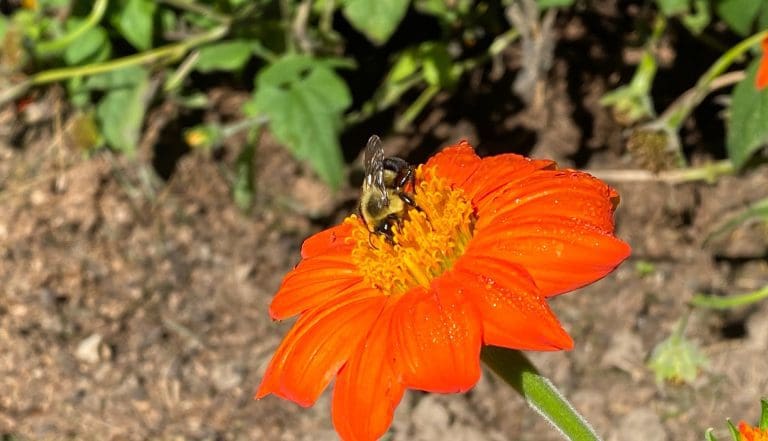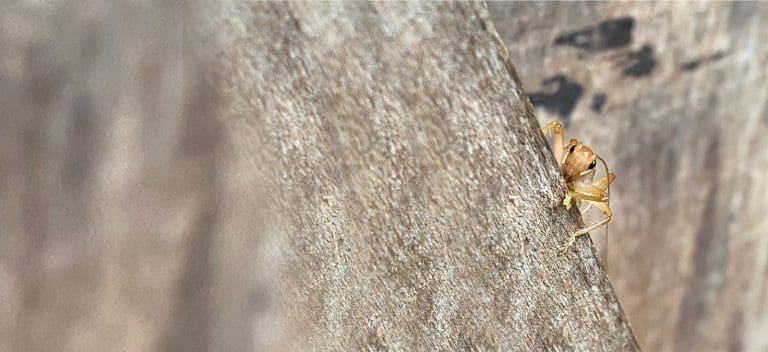Deer, Horse, and Yellow Flies Not So Dear
Summer is in full swing and so are the tabanids. The insect order name Tabanidae includes what we more commonly call deer flies, horse flies, and yellow flies. Of course, we may also add a few choice words to describe them after a painful bite.
Adult tabanid females are blood feeders and will dine on all types of warm-blooded animals including livestock, wild birds, wild mammals, your dog and even you. The group contains a variety of species around the world, with many living in the Palmetto State. They are present across South Carolina but are most often found close to moist areas.
The term horse fly refers to the larger species of these biting pests. Horse flies are about 3/8 to 1-1/8 inch in length and are in the insect genus Tabanus. Many horse flies are black or dark in color. Deer flies are generally smaller, ranging in size from 3/16 to 3/8 inch in length and are in the insect genus Chrysops. Yellow flies are similar to deer flies but on average slightly larger and are in the insect genus Diachlorus. Both deer flies and yellow flies tend to be yellow in color, but deer flies often have additional darker colors in the form of stripes or mottling especially on the thorax.
Life cycles between different tabanids vary but in general females lay eggs in a batch of 100 to 1000, usually on plants near water or wet areas. The eggs are white when first laid but turn dark after a few hours. Eggs usually hatch between 5 to 12 days, depending on the temperature and species. Adult females usually die soon after they lay their eggs. The larvae or maggots can live in water or moist soil and reach up to 1- 1/8 inch in length. Many tabanids remain as larvae almost a year. Eventually the larvae pupate and change into the adult stage, normally within a few days. In South Carolina, most adults emerge between March and October and are active during the daytime.
Not a lot is known about the behavior of tabanids. Larvae are known to feed on a wide variety of tiny animals, seizing them with their strong jaws. Larvae can even capture prey larger than themselves. It is believed that a toxin is involved in this process, but it has not been determined. When adults first emerge, they seek sweets such as nectar to give them energy for flight and mating. After mating, females seek blood meals to nourish their eggs. Female mouthparts are basically cutting knives that lacerate the skin when they bite, after which they quickly lap up the pool of blood. Males do not feed on blood. They prefer pollen.
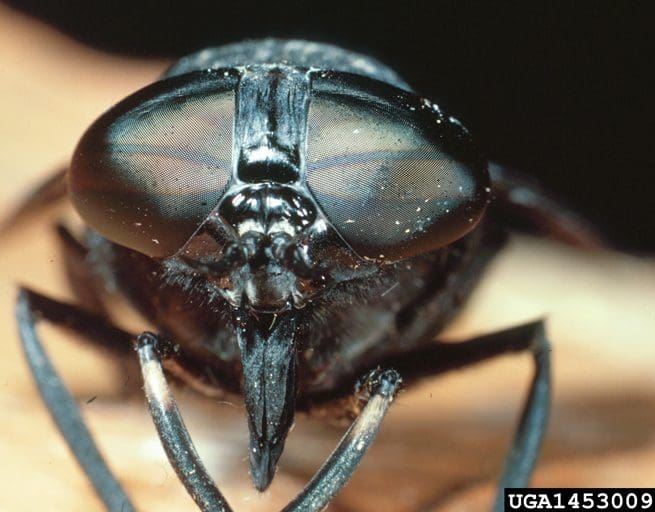
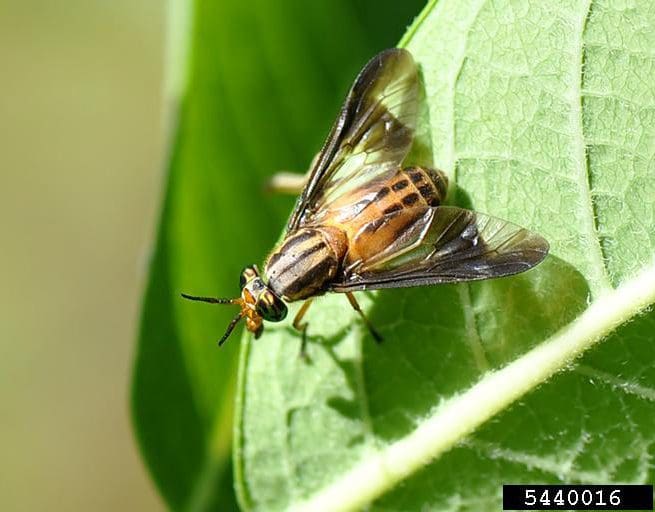
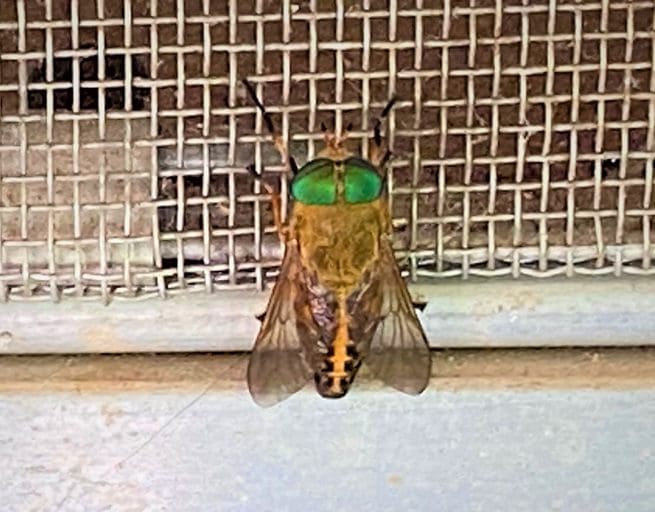
Deer flies and yellow flies attack humans more readily than horse flies and are also known to feed on some species of birds. Deer flies and yellow flies tend to feed from above, attacking the head and shoulders, whereas horse flies feed on various regions but often favor the legs, especially on livestock. Most attacks from tabanids occur during the early morning hours and late afternoon. Some adults patrol an area where they will attack any warm-blooded animal that comes in their territory.
Tabanids are very difficult to control. There are no widely effective products or strategies for controlling populations. Insecticides or repellents may be used for short-term results around livestock or humans, but this is not very effective. Wearing protective clothing can help avoid bites but these flies are particularly attracted to the colors blue, black, and red, so it is best to avoid wearing these colors. Some traps such as canopy traps, box traps or even hats with a blue sticky patch have been used with some success. If you are interested in traps for tabanids, consider reading “The Trolling Deer Fly Trap” by Dr. Russell Mizell from the University of Florida. I have placed a cloth patch covered with sticky glue (Tanglefoot) on an old blue cap and have trapped deer flies. It looks a little goofy, but it provides some satisfaction to get back at some of these painful biters!
Author: Dr. Eric Benson, ,PhD, BCE, Professor Emeritus & Extension Entomologist, College of Agriculture, Forestry and Life Sciences

